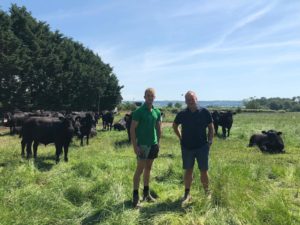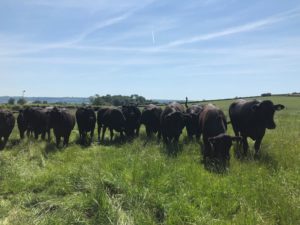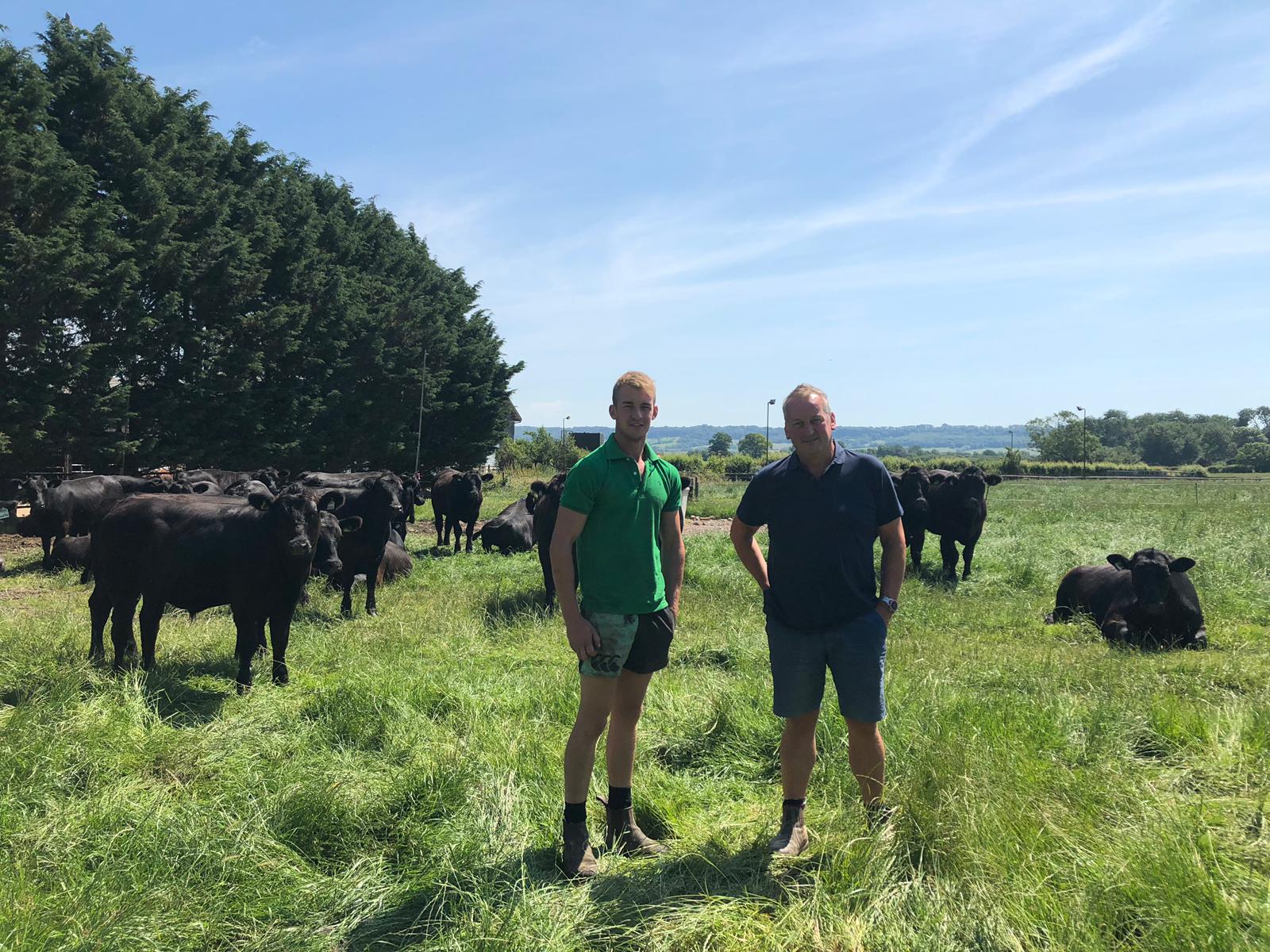This months producer profile comes from Robert Fox, who farms Aberdeen Angus and Herefords in Warwickshire. Here is his story…

On the out skirts of the village of Kineton, Warwickshire is one of our loyal customers, Robert Fox, who has been with Meadow Quality for over 20 years. Robert got into farming through family, growing up on the family farm; he then went off to Shuttleworth College in Bedfordshire. On the farm he is on at present Robert is a 2nd generation tenant, his son Albert will take over the running of the farm in years to come making him the 3rd generation. The family farm is just up the road in another Warwickshire village called Oxhill. Unlike his son Albert, who has done three seasons in New Zealand working for a bale contractor, travelling was not an option but intends on making up for it.
Robert much prefers his livestock to sitting on a tractor, in his words ‘its all the same after ten minutes.’ Albert is the complete opposite and would much rather sit in the air-conditioned cab but has not quite mastered getting the role of combine driver off his dad yet.
Since the closure of Banbury market in 1998 Robert Fox approach our late fieldsman Clive Mahony about buying fattening cattle through Meadow Quality. Fast forward to today with 500 fattening beasts consisting of Aberdeen Angus and Herefords; with a ratio of 60% steer and 40% heifers. Robert is under the Waitrose scheme and has been since day one, he has grown his farm over the years along with the growth of the scheme and has no intention of moving. 90% of Robert’s stock are brought through Meadow Quality as quoted ‘Meadow Quality and I have a brilliant relationship, the cattle are good quality, disease free and seem to grow better.’

Robert is self-sufficient in feed and bedding combining the beef enterprise with the arable, using short term grass leys with a hybrid ryegrass to control the blackgrass in the cereal crops. The grass leys are only used for silage; there is an additional 200 acres of permanent pasture used just purely for grazing. Robert grows winter wheat, spring barley and occasionally beans for the grain-based diet the cattle are one. Oil Seed Rape is included within the crop rotation but is sold on; he said they might consider dropping Oil Seed Rape out of the rotation and focus on beans.
The grass silage crop this year have been around 1,400 tonnes all in the clamp, the second cut will be made into bales; last year there where around 600 – 700 bales made. Robert prefers a dry silage and does not test it for dry matter or crude protein. The silage is mixed in a Keenan feeder wagon a long with the cereal when the cattle are housed over the winter period; there is always a constant supply of feed for them. In the summer, mineral buckets are out in the field, but Robert has found that using pig slurry from a local pig farmer the nutrients have balanced themselves out in the soil. There have been no cases of grass staggers on the farm. The farm is on heavy clay land so the drought last year that caused problems for many farmers was ideal for Robert. When grass was getting low, he supplemented the cattle with straw. He said, ‘the best thing about native breeds is their conversion rate is better than continentals.’ Robert turns out his cattle early April for the early grass and will be brought in for over winter housing in October.
All cattle one month before finishing will be brought in regardless of what time of year and will be hardened off on silage and grain. Buying the stock at 14 months means they are ready to go out to pasture; Robert buys the stock during February so there is no worry for any cases of pneumonia. All stock in the summer will get some feed for management purposes to make the easier to move stock, getting use to human contact and vehicles. During summer months there is stock in the yards which are around 18 months old and are dairy crosses; the cattle that have reached the weight required they will go every week with exception to August where the family is busy with harvesting the crops for the winter feed. Before all cattle are sent off their bellies are clipped along with their tails and ears; when cattle are brought in for being housed over winter all their backs are clipped. Robert has a clipping crush to make their lives a lot easier and safer. Last year, 2018, he used no antibiotics on the farm.
Robert goes by the weight of the cattle not the age, but if some of the cattle have hit 28 -29 months old he will send them off. For market Robert likes to send his steers off at 370 – 380 kg and heifers will be 310 – 320kg.

When asked about the future of farming he said it is very uncertain because of the uncertainty of Brexit. He also stated that Brexit should not have happened as it has become such a mess. Brexit was also mentioned when he was asked about the challenges in farming as well as the weather, Vegan activists, the financial side of running a farm and market prices.
Robert has ambitions for the farm; when asked ‘Where does he aim to have the farm in 5 years?’ his response was ‘1,000 head of cattle and to still be self-sufficient.’ Also giving the reins of the arable operation to Albert and focus more of the cattle.
One question asked was ‘who his farming icon is’. Robert’s response was his Dad, simply because he wouldn’t be where he was today without his help and support of starting up and the help throughout his farming carer.


